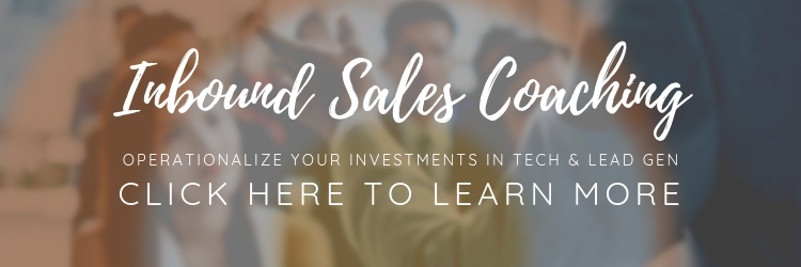How quickly does your sales team respond to highly-engaged buying behavior?
When somebody fills out the "contact us" form on your website, how quickly is that information in the hands of somebody who can do something about it? And, how quickly do they actually respond?
What about when somebody engages with your website content or marketing emails? How quickly does your sales team reach out to somebody visiting your pricing page, downloading bottom-of-funnel content offers, or opening important emails?
Did you know that your salespeople are 2,000%+ MORE LIKELY to make meaningful voice-to-voice contact with a prospect if they reach out within 5 minutes of engaging with your marketing?
These internet lead response best practices will help you close more deals at a higher velocity without putting another CENT into marketing!
For most business owners, this statistic about sales responsiveness is mind-blowing... What's worse is that most of you are guilty of not only missing that 5-minute window, but you're not even following up with leads coming in - at all. Now, if you're not getting inbound leads, you're definitely missing out.
We found a great article published by Hubspot, referencing multiple studies by The Harvard Business Journal and Insidesales.com.
Some alarming statistics that they highlighted include, "50% of buyers choose the vendor that responds first," and "the odds of the lead entering the sales process, or becoming qualified, are 21 times greater when contacted within the first 5 minutes versus 30 minutes after the lead was submitted."
I thought about this topic once upon a time, because I received an email from one of our clients whose salesperson was about to push off reaching out to a contact beyond the 5-minute limit (against our constant coaching on the issue), because she was preparing a presentation. However, her supervisor said to drop the prep work, and call right away, and the response was HUGE.
"...as a result, he was blown away by our responsiveness! He has already sent his staffing needs over to me!"
And why not? When you are searching for answers to something, don't you relate response time to professionalism? And isn't it more meaningful to you to have a discussion about something while you are still engaged to the concept and business?
Okay, so I think it's a simple concept to understand... but how do you solve this problem for your company? Most internet lead companies walk away once the leads start flowing. Our lead response best practices don't just highlight how quickly you should response to a lead--they capture the entire marketing and sales funnel, from first point of contact in the ether of cyber-space to closing the deal.
Form a bridge between sales & marketing
There are a couple of pieces to this worth noting. Part of this is about your technology stack. The other is about how the two teams work together. Let's start with how they work together first...
1. WORKING TOGETHER:
a. Execute a formal SLA -
A Service Level Agreement is step one in this, because it creates accountability and clear lines of communication. It helps marketing understand the value of certain behaviors based on experience in the field. It also helps sales understand how to leverage content produced by marketing and know when to pounce on leads brought in through the marketing funnel.
b. Lead Scoring -
This should come through collaborative discussion between sales and marketing as well. But it should also be continuously evaluated, particularly when just getting started with your inbound program or when new inbound collateral is published.
Some behaviors are going to be worth more than others. For example, if somebody downloads a top-of-funnel (TOFU) content offer, they may not be ready to call right away. However, if the form includes a non-required phone number field, and prospects are providing that information, a call may be in your best interests. So, you can assign points to the download itself as well as them providing certain information, like a phone number or company name.
We have a client in freight forwarding that we created a American to Metric conversion calculator for in an Excel spreadsheet. We ask for visitors to input their names and email addresses as requirements, but also include a non-required phone number field.
It's clearly framed for international freight usage, and 90% of those who download include their phone number. After seeing this behavior for a week, we suggested that sales call those contacts immediately. Turns out that the majority of those were in the middle of planning their freight shipments, and it's now one of their greatest customer-generation offers.
For our staffing client referenced above, we had a salary guide with similar form requirements, and we immediately identified it as the perfect intro to sales.
Now, as far as tracking these scores, I will go back to my first point about getting better marketing software. Hubspot Pro includes this in their base price, and we are able to create automated lists that separate the hot leads from all of the others.
c. Cross-collaborating -
When sales and marketing operate in silos, we miss out on HUGE opportunities and overlook problems that lead to complete breakdowns between the two departments, SLA or not.
One of the things we do for our Sales Enablement clients is host monthly cross collaboration calls, where we discuss challenges and successes on both sides of the fence, while providing actionable steps towards filling problematic gaps.
When I was in staffing, one of my biggest complaints was how disconnected our corporate office seemed to be from sales, and thus, how disconnected marketing was from sales. While the recession was brutalizing our margins due to mass layoffs, the mandates from above were to quadruple our call output. The assets we were given were brochures and fliers... the very same assets we were pushing prior to the bottom falling out.
And nobody was listening to sales! They viewed our ideas that challenged the status quo as excuse-making, not problem-solving.
So, I took matters into my own hands, and created my own marketing collateral, which consisted of things like Excel calculators that identified the point in time when overtime pay was more costly than temporary staff.
If only that came from our marketing department - our branch wouldn't have been the only one to see success with it.
MORE LIKE THIS:
- Ditch the Cold Calling Scripts for These
- Improve your Inbound Sales Process
- 5 B2B Sales Strategies and Tactics that Must GO
- Hubspot CRM Review
2. THE TECH:
Forewarning - I may get a little geeked out here... Tech is important for sales & marketing alignment, especially when responsiveness is a priority. So, this is not to be overlooked just because it's number 2 on the list.
a. Get better marketing software -
This is a big one. Too many of you are still using the basic WordPress brochure sites with 1 or 2 lead conversion conduits. Usually, that consists of a contact us form and maybe a blog/newsletter sign up form.
Now, if you're getting leads through these channels, good on you. But WordPress is NOT a marketing software. It's merely a place where you host your website and/or blog, commonly known as a "Content Management System" or CMS. It isn't designed to do anything beyond hosting your content and receiving submissions.
If you want something more sophisticated (and I promise, you do), you're going to need to spend a little money... I suggest spending it on a program that houses your contacts, helps you deploy your digital marketing (blogging, social media, email, SEO) and allows you to create sales & marketing triggers based on their behavior.
In the past, we have largely supported Hubspot for this, because it not only houses contacts, but it's the all-in-one marketing management system for websites (even replacing WordPress if you want), landing pages, forms, calls to action, marketing emails, SEO, social media marketing, and in-depth data analytics. You don't have to mess with plugins either. Each of those are naturally integrated.
MORE: Why Hubspot Will Ruin Your Marketing
But they're not the only ones playing in this space, so check them out, and be sure to compare them to their big competitors like Marketo, Act-On, and Pardot (to name a few).
This is step 1 in transitioning your website from a reactive brochure to your most powerful sales tool.
b. Integrate your CRM -
Start by integrating your marketing software with your CRM. This creates an automated bridge between the two that will save a TON of time and embarrassment. There's nothing that hits the latter more than making sales calls to people receiving marketing communications, and having no clue as to what is being sent, when, or whether the prospect engaged with it.
There's nothing more empowering to sales than being able to see somebody's level of engagement with your website, marketing emails, blog articles, content offers, and social media.
c. Sales alerts
The final piece to the puzzle - sales alerts. Once you have sophisticated marketing software, it's integrated with your CRM, the rules of engagement are clear, and your lead scoring is accurate, communicating to sales about hot prospects with time enough to make contact within that 5-minute window is easy...
And it can even be automated.
There are a couple of ways to approach it.
You could start by putting one person in charge of managing inbound leads, and make sure they get alerts for any kind of activity that is considered valuable.
In the client example referenced above, that was a simple "contact us" form submission, and both the salesperson AND her supervisor received the alert. This is why within 10 seconds of receiving the request, the supervisor was telling her to "go go go."
The other way to approach it is to create a list in your marketing software that has a certain critical mass threshold set up. Pair that with whatever rules of division you create between salespeople (geography, industry, etc), and when prospects hit that coveted point value, an automated alert will go to the appropriate salesperson, who can then drop everything and make the call.
To make it easier to understand, I'll break down OUR tool stack and flow of communication:
MARKETING: Hubspot Pro
- Contact us and assessment form submissions go to my salesperson AND me via email and the Hubspot app on our phones
- When reviewing in Hubspot, we can see their entire history on our website and with our emails, even activity prior to converting on a form
CRM: Hubspot Sales Professional
- We have the Chrome extension installed, so we also get pop-ups on our desktops when certain forms are filled out
- After a contact has been assigned to a certain rep, we have it set up so that rep gets ALL notifications based on that contact's movement
Want to see a live example? Literally, as I was writing this blog post, I saw an alert from an old prospect opening a proposal email I sent to them at the beginning of the year. However, at the time, they did not have it in their budget yet (CPA firms are very practical like that), so we were set to revisit the issue in early 2018.
But since I saw the alerts, I decided to reach out within that 5-minute window, and it was a good thing I did!
Got a story you want to share? Please comment below or connect with us to tell us all about it!
CONCLUSION
To learn more about how to improve your b2b sales process or find out about our inbound sales training programs, visit our site HERE:



